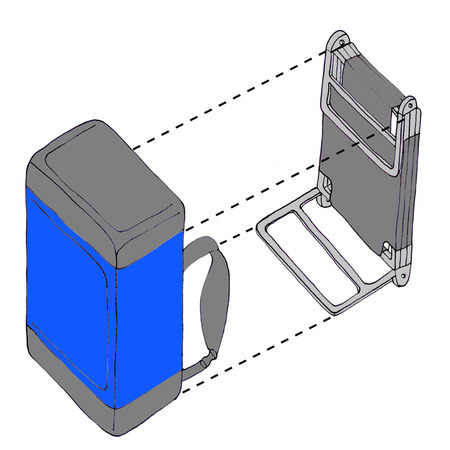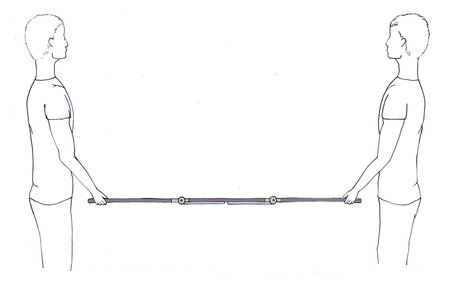detachApack: A Versatile Medical Clinic System
 Sunday, February 17, 2013 at 4:48PM
Sunday, February 17, 2013 at 4:48PM
 Duffel Bag and Frame/Lounge components of detachApack
Duffel Bag and Frame/Lounge components of detachApack
DetachApack is a system designed to allow medical personnel to reach their set destination whether it be across difficult terrain, deep rivers, or other obstacles. These packs allow clinics to set up at the furthest of villages even when trucks cannot drive there. If the backpacks are stored on the trucks, then at any point when driving becomes too difficult, each team member can grab a backpack and they can finish the remainder of the distance on foot.
 Zip-off detachable ends and compartments for organization of supplies
Zip-off detachable ends and compartments for organization of supplies
Each backpack consists of a pack frame and a duffel bag. The pack frame is multifunctional. Not only is it used to add comfort and help support the pack while hiking, but it also converts into a lounge for the patients to lie on while being examined, a chair for the medical staff, and even a stretcher in case of a critical needs patient. The duffel bag consists of three color coded pieces. The charcoal pieces on the end can be zipped off and used in the exam areas by the doctors and nurses. The blue center piece is then used in the pharmacy area. All pieces have organizational dividers so that all supplies are kept in place throughout the hike and are easy to find once at the clinic destination.
 Frame/Lounge can also be used as a stretcher in the event of an emergency
Frame/Lounge can also be used as a stretcher in the event of an emergency
The final review was a very helpful critique. We discussed the ways in which the packs could be filled with the exact same supplies or labeled when they differ. I think that it would be most beneficial if each backpack’s medical (charcoal-colored) bags were the same and each pack’s pharmaceutical (blue-colored) bag were different. Each packs medical compartments need to be the same so that each doctor and nurse can have every supply they need at hand and not go search around for supplies in others’ bags. Each pharmaceutical bag needs to be different, perhaps a different category of medication. Therefore when setting up the pharmacy area, the bags can be arranged in a helpful order by prescription type.




Reader Comments (2)
I enjoy the idea that the stretcher frame compacts to hold a backpack. Something that is not addressed here is the material choice for the dividers - in a backpack, weight adds up surprisingly fast. Also to be noted is the way that these dividers meet the interior of the pack (snaps, buckles and straps get heavy quickly). A great material is a ripstop nylon - it resists tears and snags as well as keeps out water and bacteria. Strong velcro is a good option for keeping things connected and lightweight but it can get worn in quicker than zippers. Zippers are great but they do add some weight. Its a great project! Christian and I had to consider the material choices as well in the BlueCore pack. Nicely done!
The fact that everything in the pack--even the frame--is reusable is unique and pretty clever. It's clear that you spent a lot of time figuring out what this frame with the duffle bags attached will look like both in transport and in use. It seems from all the nurses that they bring the most basic pharmaceuticals, maybe each pack's pharmaceutical pack shouldn't be different, but there could be different categories of bags (i.e. antibiotics, pain killers, etc.) and a certain number of packs carrying pharmaceutical bags of one of these categories. This way, there is still some uniformity across all packs for fast access. Nice presentation, the clear images and bullet points are very easy to follow!